3 Property from the Estate of Philip and Edna Minkin, Bloomfield Hills Michelangelo Pistoletto Gruppo di persone 1962 graphite on tissue paper on mirror-polished stainless steel, mounted to canvas 71 x 49 in. (180.3 x 124.5 cm) Signed and dated "Pistoletto 1962" on the reverse.
Provenance Galleria d'Arte Galatea, Turin Ileana Sonnabend, Paris Leo Castelli Gallery, New York Robert Elkon Gallery, New York (1963) J.L. Hudson Gallery, Detroit (1965) Lee Hoffman, Michigan Acquired from the above by the present owner in 1991 Exhibited Turin, Galleria d'Arte Galatea, Pistoletto, April 27 - May 14, 1963 Pittsburgh, Carnegie Museum of Art, 1964 International Exhibition of Contemporary Painting and Sculpture, October 30, 1964 - January 10, 1965 Literature Pistoletto, exh. cat., Galleria d'Arte Galatea, Turin, 1963, no. 3 Venice, Palazzo Grassi, Pistoletto, Electa Editrice, Milan, 1976, p. 6, no. 8 (illustrated) Rivoli, Castello di Rivoli Museo d’Arte Contemporanea, Un’avventura internazionale. Torino e le arti 1950-1970, Charta, Milan, 1993, p. 11 (illustrated) Video Michelangelo Pistoletto 'Gruppo di persone', 1962 Michelangelo Pistoletto's 'Gruppo di persone', 1962 to be offered in our 20th Century & Contemporary Art Evening Sale on 8 November 2015 in New York. Catalogue Essay Gruppo di persone from 1962 is a seminal example of Michelangelo Pistoletto’s Specchi works and one which directly references his early self-portrait paintings. The figure to the left is indeed the same image of the artist he uses in many of those formative pictures. Pistoletto was the first artist of the Arte Povera, a group established in 1967, to understand the need to deal with the “issue” of painting. His roots in painting were strongly influenced by a radical exhibition of Francis Bacon’s work that was organized by Mario Tazzoli at his Galleria Galatea in Turin in 1958. Between that year and 1961, Pistoletto experimented with the human figure and glossy varnish, creating a reflective surface in his paintings that announced his fascination with the presence of the viewer within the works themselves. The man's figure on the left, who has turned his back to the viewer, is the artist himself. Pistoletto played freely with his own image in the early reflective paintings, and standing in front of Gruppo di persone, the viewer becomes part of the composition, reflected in its surface and embedded in the scene alongside the artist. Included in the artist’s first show of Specchi at the Galleria Galatea in 1963, Gruppo di persone was the largest of the 15 pieces exhibited, of which one is now in the permanent collections of the San Francisco Museum of Modern Art, the Nationalgalerie in Berlin and the Pinault Collection in Paris. In the early 1960’s, painting was under attack by the radical transformations taking place within the realm of contemporary art and by the political commitment of many young artists who saw, in the medium of painting, a symbol of conservative, if even reactionary and bourgeois thinking. Pistoletto was often ahead of the curve looking to solutions for problems, which sometimes had seemingly not yet been discovered. By 1967 when the Arte Povera challenged the supremacy of painting with utterly new materials, Pistoletto had already been celebrated with an exhibition of his Specchi in 1966 at the Walker Art Center, one of the most visionary institutions in the United States, presenting the work of the most superlative postwar vanguard European and American artists. Possibly the very first Specchio, this superb 1962 work clearly bridges the passage from the glossy paintings to the mirrored surfaces. In this work, Pistoletto started experimenting with the velina paper, a very thin special tracing paper used for architectural drawings, on which he starts drawing images and people from photographs. The two figures on the right are taken from a photographic source and depict the artist’s good friends: his fellow artist, Renato Rinaldi and the poet Piera Oppezzo. Pistoletto and Rinaldi had befriended one another at the Testa school of advertising and maintained a very close friendship and mutual respect for one another. Rinaldi appears in many of the early works and is closely associated with the conception of the early chi.
3 Property from the Estate of Philip and Edna Minkin, Bloomfield Hills Michelangelo Pistoletto Gruppo di persone 1962 graphite on tissue paper on mirror-polished stainless steel, mounted to canvas 71 x 49 in. (180.3 x 124.5 cm) Signed and dated "Pistoletto 1962" on the reverse.
Provenance Galleria d'Arte Galatea, Turin Ileana Sonnabend, Paris Leo Castelli Gallery, New York Robert Elkon Gallery, New York (1963) J.L. Hudson Gallery, Detroit (1965) Lee Hoffman, Michigan Acquired from the above by the present owner in 1991 Exhibited Turin, Galleria d'Arte Galatea, Pistoletto, April 27 - May 14, 1963 Pittsburgh, Carnegie Museum of Art, 1964 International Exhibition of Contemporary Painting and Sculpture, October 30, 1964 - January 10, 1965 Literature Pistoletto, exh. cat., Galleria d'Arte Galatea, Turin, 1963, no. 3 Venice, Palazzo Grassi, Pistoletto, Electa Editrice, Milan, 1976, p. 6, no. 8 (illustrated) Rivoli, Castello di Rivoli Museo d’Arte Contemporanea, Un’avventura internazionale. Torino e le arti 1950-1970, Charta, Milan, 1993, p. 11 (illustrated) Video Michelangelo Pistoletto 'Gruppo di persone', 1962 Michelangelo Pistoletto's 'Gruppo di persone', 1962 to be offered in our 20th Century & Contemporary Art Evening Sale on 8 November 2015 in New York. Catalogue Essay Gruppo di persone from 1962 is a seminal example of Michelangelo Pistoletto’s Specchi works and one which directly references his early self-portrait paintings. The figure to the left is indeed the same image of the artist he uses in many of those formative pictures. Pistoletto was the first artist of the Arte Povera, a group established in 1967, to understand the need to deal with the “issue” of painting. His roots in painting were strongly influenced by a radical exhibition of Francis Bacon’s work that was organized by Mario Tazzoli at his Galleria Galatea in Turin in 1958. Between that year and 1961, Pistoletto experimented with the human figure and glossy varnish, creating a reflective surface in his paintings that announced his fascination with the presence of the viewer within the works themselves. The man's figure on the left, who has turned his back to the viewer, is the artist himself. Pistoletto played freely with his own image in the early reflective paintings, and standing in front of Gruppo di persone, the viewer becomes part of the composition, reflected in its surface and embedded in the scene alongside the artist. Included in the artist’s first show of Specchi at the Galleria Galatea in 1963, Gruppo di persone was the largest of the 15 pieces exhibited, of which one is now in the permanent collections of the San Francisco Museum of Modern Art, the Nationalgalerie in Berlin and the Pinault Collection in Paris. In the early 1960’s, painting was under attack by the radical transformations taking place within the realm of contemporary art and by the political commitment of many young artists who saw, in the medium of painting, a symbol of conservative, if even reactionary and bourgeois thinking. Pistoletto was often ahead of the curve looking to solutions for problems, which sometimes had seemingly not yet been discovered. By 1967 when the Arte Povera challenged the supremacy of painting with utterly new materials, Pistoletto had already been celebrated with an exhibition of his Specchi in 1966 at the Walker Art Center, one of the most visionary institutions in the United States, presenting the work of the most superlative postwar vanguard European and American artists. Possibly the very first Specchio, this superb 1962 work clearly bridges the passage from the glossy paintings to the mirrored surfaces. In this work, Pistoletto started experimenting with the velina paper, a very thin special tracing paper used for architectural drawings, on which he starts drawing images and people from photographs. The two figures on the right are taken from a photographic source and depict the artist’s good friends: his fellow artist, Renato Rinaldi and the poet Piera Oppezzo. Pistoletto and Rinaldi had befriended one another at the Testa school of advertising and maintained a very close friendship and mutual respect for one another. Rinaldi appears in many of the early works and is closely associated with the conception of the early chi.
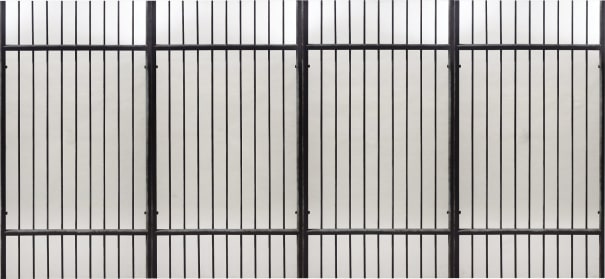
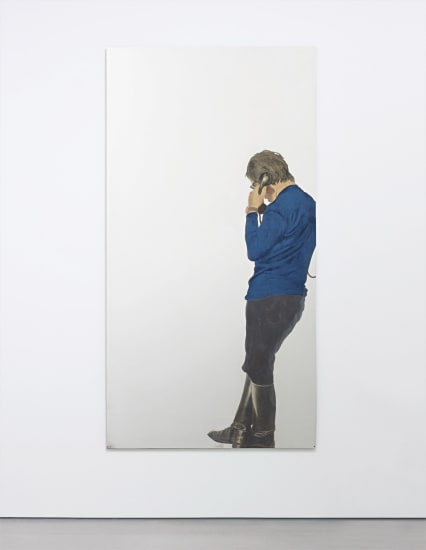
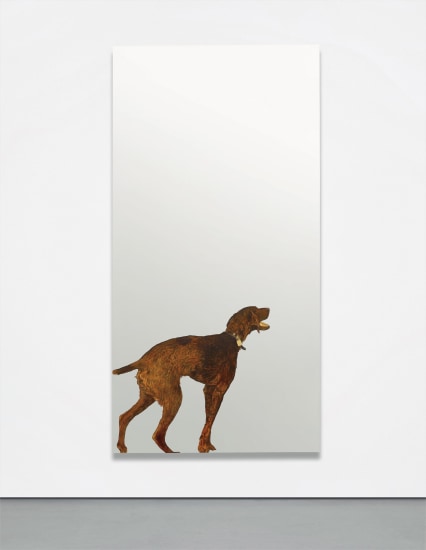


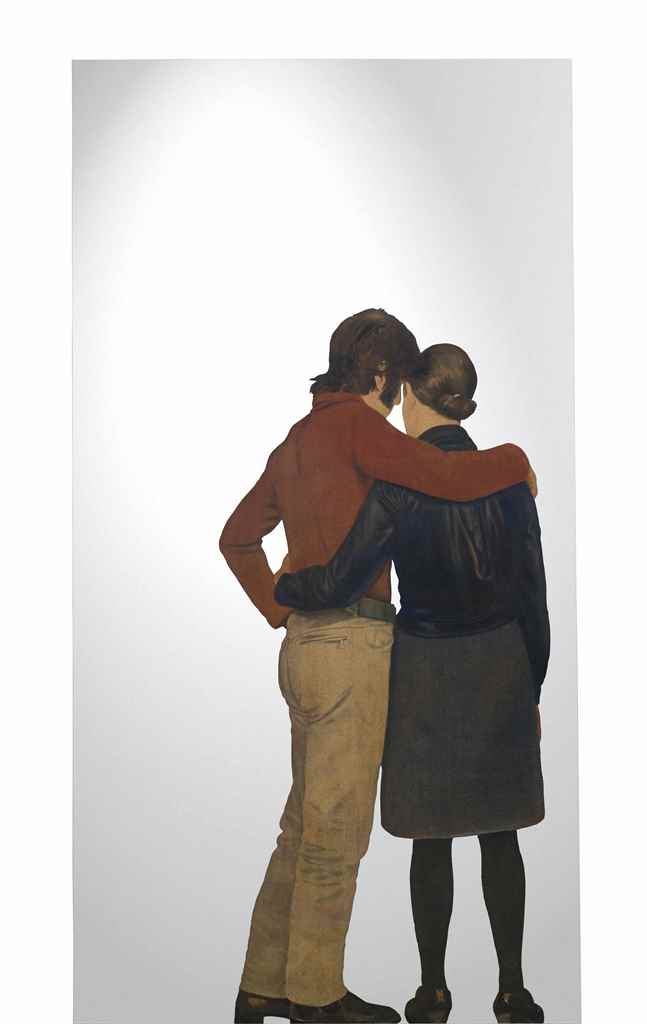
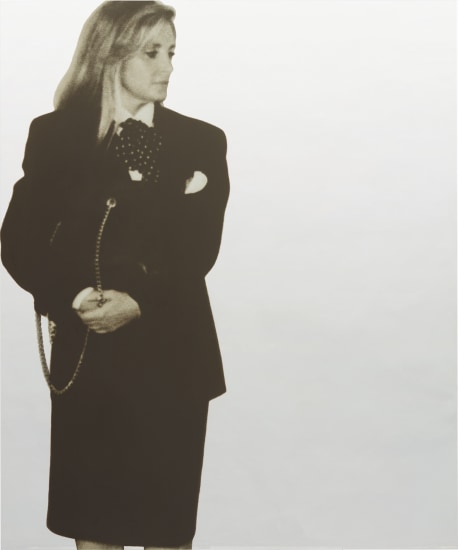

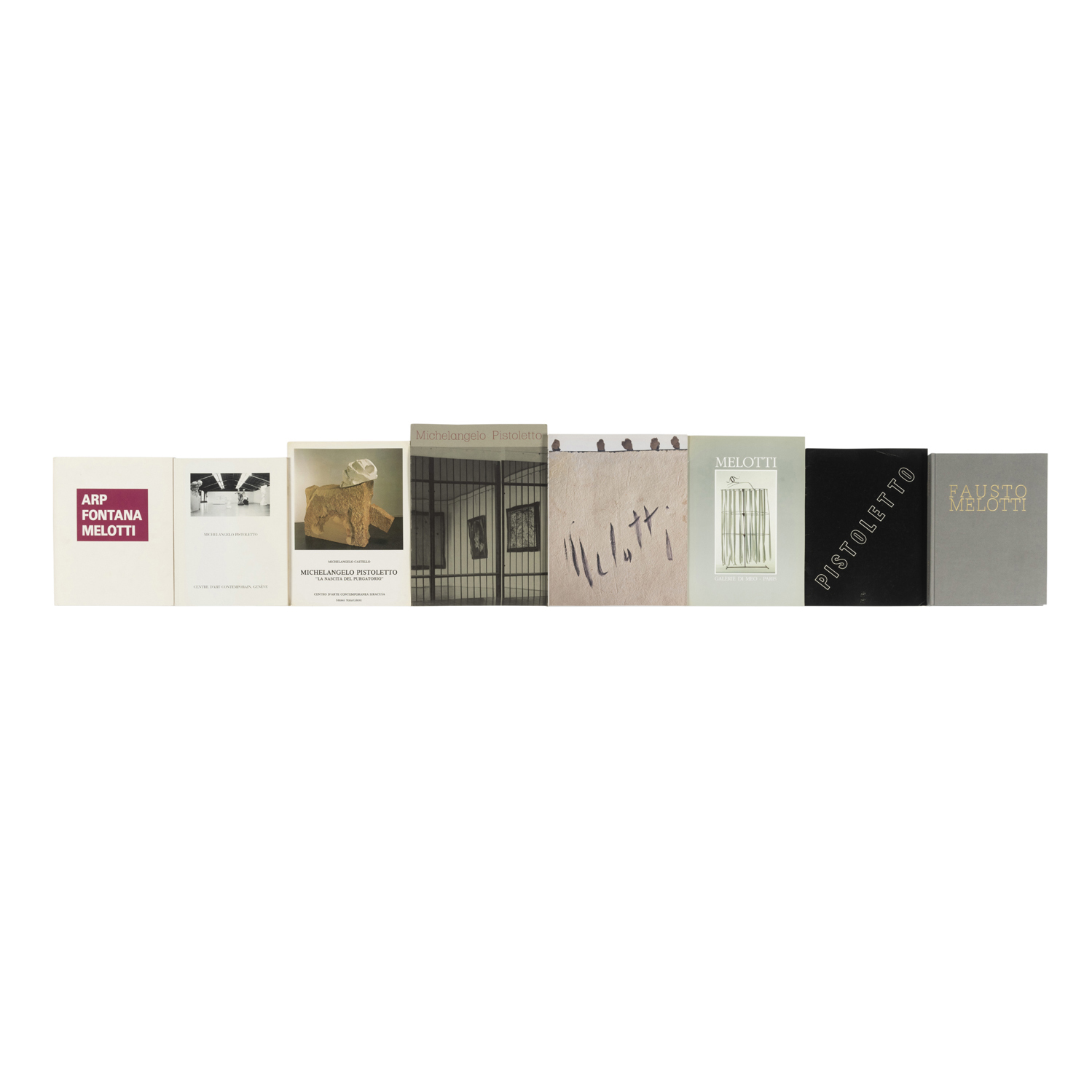




Testen Sie LotSearch und seine Premium-Features 7 Tage - ohne Kosten!
Lassen Sie sich automatisch über neue Objekte in kommenden Auktionen benachrichtigen.
Suchauftrag anlegen